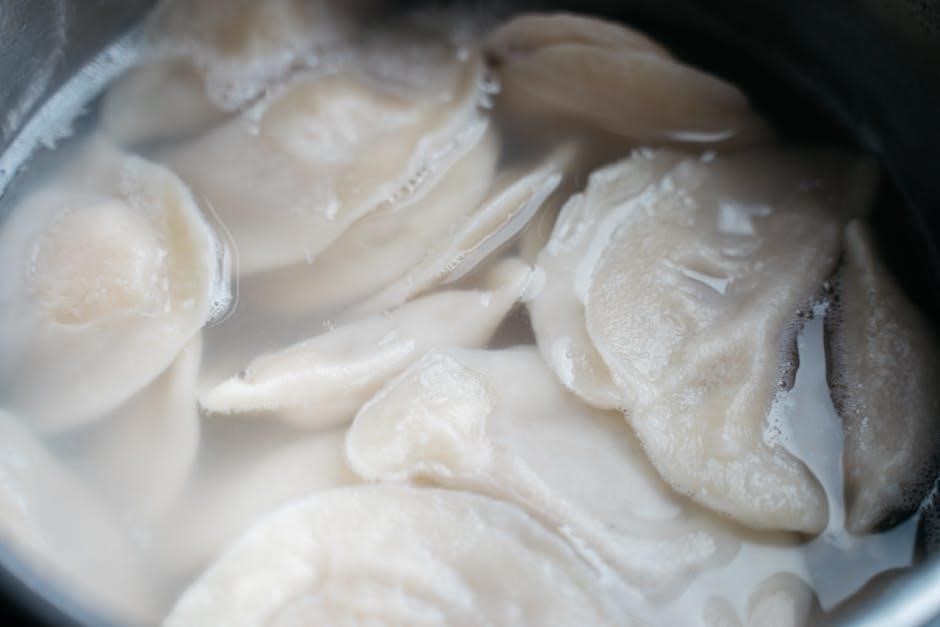
boiling mouthpiece instructions
A boiling mouthpiece is a thermoplastic device designed to be sterilized and shaped by boiling. It ensures proper fit and hygiene for medical or athletic use.
Overview of Boiling Mouthpiece Instructions
Boiling mouthpiece instructions provide a step-by-step guide for preparing, sterilizing, and fitting a thermoplastic mouthpiece. The process involves boiling the device to soften it, allowing for a custom fit around the teeth and mouth. Proper preparation includes cleaning the mouthpiece before boiling and ensuring it cools slightly before insertion. Users are advised to bite down gently to shape the mouthpiece accurately. Post-boiling care includes storing the device in a clean, dry place and regularly disinfecting it. These instructions emphasize the importance of following manufacturer guidelines to ensure safety, comfort, and effectiveness. By adhering to these steps, users can achieve a secure, personalized fit for medical or athletic purposes, maintaining hygiene and longevity of the mouthpiece.
Importance of Proper Sterilization and Fit
Proper sterilization and fit are crucial for the effectiveness and safety of a boiling mouthpiece. Sterilization ensures the removal of germs and bacteria, preventing infections and maintaining hygiene, especially for medical or athletic use. A correct fit is essential for comfort and functionality, as an ill-fitting mouthpiece may cause discomfort or fail to provide adequate protection. Improper sterilization can lead to contamination, while a poor fit may result in reduced performance or injury. Following the boiling and shaping instructions carefully helps achieve both sterility and a customized fit, ensuring the mouthpiece serves its intended purpose effectively. Regular disinfection and proper storage further enhance its longevity and usability.

What Is a Boiling Mouthpiece?
A boiling mouthpiece is a thermoplastic device designed to be sterilized and shaped by boiling. It is commonly used in medical and athletic contexts.
Definition and Purpose
A boiling mouthpiece is a thermoplastic device designed to be sterilized and customized through a boiling process. It is primarily used in medical and athletic contexts to provide a protective or therapeutic fit. Commonly, it is used for creating custom mouthguards for athletes or for delivering medication in medical settings. The mouthpiece softens when exposed to boiling water, allowing it to be shaped to fit an individual’s teeth and mouth perfectly. Proper fit is essential for both comfort and functionality, ensuring the device serves its intended purpose effectively. Regular sterilization and maintenance are crucial to maintain hygiene and longevity. This versatility makes boiling mouthpieces a popular choice for various applications requiring a tailored fit.
Common Uses in Medical and Athletic Contexts
A boiling mouthpiece is widely used in both medical and athletic settings due to its versatility and customization capabilities. In medical contexts, it is often employed as a delivery device for medications, such as inhalers or nebulizers, where precise fit ensures effective treatment. Athletes commonly use boiling mouthpieces as mouthguards, particularly in sports requiring protection against impacts. The thermoplastic material is boiled, softened, and molded to fit the user’s teeth, providing a secure and comfortable fit. This customization reduces the risk of injury and enhances performance. The ability to sterilize and reshape the mouthpiece makes it a practical solution for repeated use in various applications, ensuring safety, hygiene, and optimal functionality across different fields.

Preparing for Boiling
Preparing for boiling involves gathering a pot, water, and tongs. Clean the mouthpiece thoroughly and ensure the water level is sufficient for submersion.
Step-by-Step Preparation Process
Start by gathering materials: a pot, water, and tongs. Fill the pot with enough water to fully submerge the mouthpiece. Bring the water to a boil, ensuring it reaches the recommended temperature. Submerge the mouthpiece carefully, avoiding splashing. Allow it to soften in the boiling water for the specified time, usually 30 seconds to 1 minute. Use tongs to remove the mouthpiece and let it cool slightly. Once cool enough to handle, place it in your mouth and bite down gently to shape it to your teeth. Hold the bite for a few seconds to set the shape. Remove excess water and allow the mouthpiece to cool completely before use. Proper preparation ensures a secure, personalized fit and optimal performance.
Materials and Tools Needed

To properly prepare a boiling mouthpiece, you will need a few essential materials. Start with a clean pot large enough to fully submerge the mouthpiece in water. Use fresh, distilled water to prevent mineral buildup. A pair of tongs or a slotted spoon is necessary for safely handling the mouthpiece while it’s hot. A clean, heat-resistant surface is needed for cooling. Optional items include a timer to ensure accurate boiling time and paper towels for drying. Make sure all tools are sterilized before use to maintain hygiene. Having these materials ready will streamline the process and ensure a safe, effective boiling experience.
Pre-Boiling Cleaning and Hygiene Practices
Before boiling, the mouthpiece must be thoroughly cleaned to ensure hygiene and effectiveness. Rinse it under clean water to remove any surface debris. Use a mild soap and a soft-bristled brush to gently scrub away residue, paying attention to crevices. Avoid harsh chemicals or abrasive materials that could damage the thermoplastic. After cleaning, rinse the mouthpiece thoroughly with clean water to eliminate any soap residue. Pat it dry with a clean towel and allow it to air dry slightly before boiling. This step prevents excess moisture from affecting the boiling process. Proper pre-boiling hygiene ensures a clean, safe, and effective sterilization process.

Boiling Process
Submerge the mouthpiece in boiling water for 30-60 seconds. Ensure it’s fully covered. Avoid letting the water boil dry during the process for safety.
Submerging the Mouthpiece in Boiling Water
To submerge the mouthpiece correctly, place it into boiling water, ensuring it is fully covered. Use a pot with enough water to completely submerge the device. Once the water reaches a rolling boil, gently lower the mouthpiece into it. Avoid splashing by using tongs or a slotted spoon for placement. Ensure the mouthpiece remains fully underwater throughout the boiling process. Monitor for bubbles to confirm it is submerged properly. Do not overcrowd the pot with multiple mouthpieces. Keep the water level high to prevent it from dropping below the mouthpiece. This step is crucial for proper sterilization and softening of the thermoplastic material. Do not leave it in longer than recommended, typically 30-60 seconds, to avoid damage.
Recommended Boiling Time and Temperature
The ideal boiling temperature for a mouthpiece is between 160°F and 180°F (71°C to 82°C). The recommended boiling time is typically 30 to 60 seconds, depending on the manufacturer’s instructions. Exceeding this duration may cause warping or damage to the thermoplastic material. Ensure the water reaches a rolling boil before submerging the mouthpiece. Use a timer to maintain accuracy and avoid overheating. After boiling, promptly remove the mouthpiece with tongs or a slotted spoon to prevent overexposure. Allow it to cool slightly before fitting. Always refer to the specific guidelines provided with your mouthpiece, as some models may require shorter or longer boiling times. Proper timing ensures the device is sterilized without compromising its integrity.
Handling the Mouthpiece After Boiling
After boiling, carefully remove the mouthpiece from the water using tongs or a slotted spoon to avoid burns. Place it on a clean, heat-resistant surface to cool for about 10-15 seconds. This brief cooling period helps prevent discomfort when fitting. Once slightly cooled, immediately insert the mouthpiece into your mouth, aligning it with your upper teeth. Bite down gently but firmly to shape it according to your dental structure. Hold the bite for 20-30 seconds to ensure a proper mold. Do not let it cool completely, as it may harden before shaping. Follow these steps carefully to ensure a comfortable and secure fit without damaging the material.

Cooling and Fitting
Allow the mouthpiece to cool slightly before fitting. Place it in your mouth, align with your teeth, and bite down gently to shape it perfectly.
Allowing the Mouthpiece to Cool Slightly
After boiling, carefully remove the mouthpiece from the water using tongs or a slotted spoon. Let it cool for about 30 seconds to avoid burns. During this time, the thermoplastic material retains its pliability but becomes safer to handle. It’s important to not let it cool too long, as it may harden before fitting. Gently shake off excess water and ensure the mouthpiece is not excessively hot. This step ensures comfort and safety when placing it in your mouth for shaping. Proper cooling prevents discomfort and allows for an accurate fit; Once slightly cooled, proceed to place it in your mouth and align it with your teeth for the shaping process.
Placing the Mouthpiece in the Mouth
Once the mouthpiece has cooled slightly, carefully place it over your upper teeth, ensuring proper alignment. The mouthpiece should fit snugly, covering the front teeth and fitting comfortably behind them. Use a mirror to guide the placement for accuracy. Gently press the mouthpiece with your fingers to secure it in position, ensuring it doesn’t shift. The mouthpiece should align with your natural bite and not feel forced. Allow it to mold to the shape of your teeth and palate for a precise fit. Make sure your mouth is relaxed and your tongue is in its natural resting position. Proper placement ensures optimal comfort and effectiveness. Follow the manufacturer’s guidelines for precise alignment and fitting to achieve the best results.
Biting Down to Shape the Mouthpiece
After placing the mouthpiece in your mouth, gently bite down to shape it to your teeth and palate. Apply firm but gentle pressure, ensuring even contact across your dental arch. Hold this position for 10-15 seconds to allow the thermoplastic material to mold to your bite. Do not bite too hard, as this could warp or crack the mouthpiece. Once you release, check the fit by ensuring the mouthpiece is snug and evenly aligned with your teeth. If necessary, reposition and repeat the process. The mouthpiece will harden as it cools, so make sure the fit is comfortable and secure before it fully sets. Proper biting ensures a customized fit for optimal protection and performance.
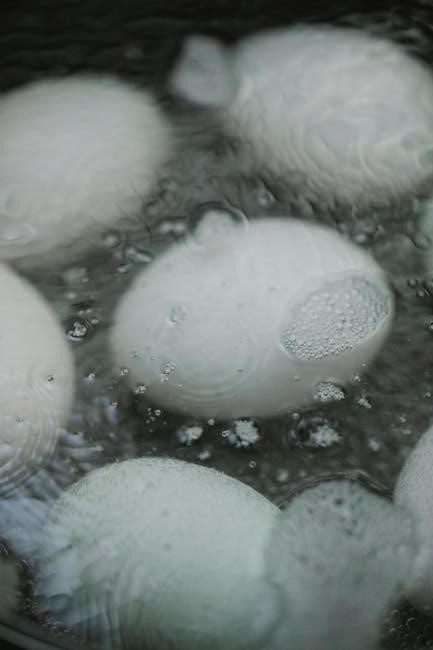
Post-Boiling Care
Store the mouthpiece in a clean, dry place to maintain its shape and hygiene. Clean it with mild soap and water after each use, and disinfect regularly as recommended by the manufacturer to ensure optimal protection and comfort.
Proper Storage and Maintenance
After boiling and fitting, store the mouthpiece in a clean, dry environment to prevent deformation. Use a protective case or ventilated container to maintain its shape and hygiene. Avoid exposing it to direct sunlight or extreme temperatures, as this may cause warping. Regularly inspect the mouthpiece for signs of wear or damage. Clean it with mild soap and water after each use, and rinse thoroughly to remove any residue. Allow it to air-dry before storing to prevent moisture buildup, which can lead to bacterial growth. Proper storage ensures the mouthpiece remains hygienic and retains its custom fit for optimal performance and comfort.
Cleaning the Mouthpiece After Each Use
After each use, rinse the mouthpiece with clean, hot tap water to remove any residue. Use mild soap and a soft toothbrush to gently scrub away stubborn debris. Avoid using harsh chemicals, abrasive cleaners, or hot water that could damage the material. Rinse thoroughly to ensure no soap remains, as it could cause discomfort or irritation. Pat the mouthpiece dry with a clean towel and allow it to air-dry completely before storing. Regular cleaning prevents bacterial buildup and maintains hygiene. For deeper disinfection, soak the mouthpiece in a mixture of equal parts water and white vinegar for 10 minutes, then rinse thoroughly. Proper cleaning ensures the mouthpiece remains safe, comfortable, and effective for continued use.
Regular Disinfection Practices
Regular disinfection is crucial for maintaining the mouthpiece’s hygiene and longevity. After cleaning, submerge the mouthpiece in boiling water for 5 minutes to kill bacteria and germs; Ensure the water covers the device completely and avoid letting it boil dry. For added disinfection, mix equal parts water and white vinegar in a bowl, soak the mouthpiece for 10 minutes, then rinse thoroughly. Always allow the mouthpiece to cool slightly before handling to prevent burns. Regular disinfection prevents bacterial growth and ensures the mouthpiece remains safe for repeated use. Store the mouthpiece in a clean, dry, well-ventilated area to maintain its condition and prevent microbial buildup.
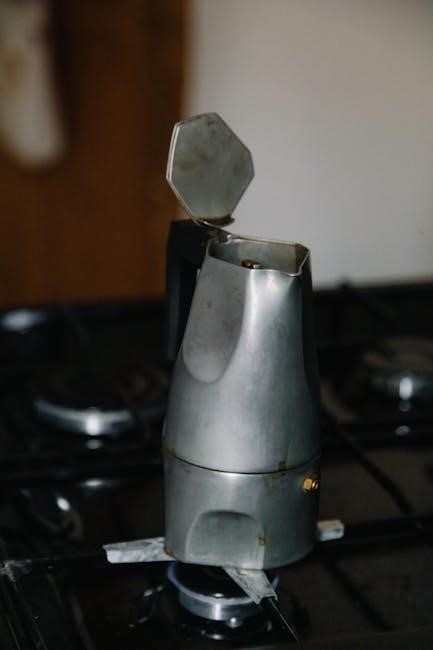
Troubleshooting Common Issues
Common issues include improper fit, warping, or discomfort. To address these, ensure correct boiling time, avoid overheating, and reshape carefully. Proper cooling before fitting helps prevent discomfort.
Resolving Fit Problems
If the mouthpiece doesn’t fit properly, check the boiling time and cooling period. Ensure it cools slightly but remains pliable before fitting. Avoid overheating, as this can cause warping. Gently reshape the mouthpiece while it’s warm, focusing on areas needing adjustment. If it feels too tight or loose, re-boil and retry the fitting process. Proper alignment with your teeth and gums is crucial for comfort and effectiveness. For severe fit issues, consult the manufacturer’s guidelines or seek professional assistance. Regular cleaning and disinfection can also prevent fit problems caused by residue buildup. Always follow the recommended steps carefully to achieve a secure and comfortable fit.
Addressing Warping or Damage
If the mouthpiece becomes warped or damaged during boiling, allow it to cool slightly, then carefully reshape it while still warm. Avoid overheating, as this can cause permanent deformation. If the damage is severe, re-boil the mouthpiece for the recommended time and try reshaping it again. Ensure the water level is sufficient to fully submerge the mouthpiece to prevent uneven heating. For minor warping, gently bend the mouthpiece back into shape while it’s still pliable. Proper cooling and storage can prevent further damage. If the mouthpiece is beyond repair, replace it to maintain hygiene and effectiveness. Always follow the manufacturer’s guidelines for boiling and handling to minimize the risk of warping or damage.
Dealing with Discomfort or Irritation
If the mouthpiece causes discomfort or irritation, check if it’s too tight or misshapen. Allow it to cool slightly before reinserting, as excessive heat can cause irritation. Avoid forcing the mouthpiece into shape, as this may lead to tears or uneven surfaces. If discomfort persists, re-boil the mouthpiece and carefully reshape it, ensuring even cooling. Proper fit is crucial to prevent irritation. If issues remain, consult a professional for assistance. Regular cleaning and maintenance can also help prevent discomfort, ensuring a smooth and hygienic experience. Always prioritize comfort and hygiene to avoid any long-term discomfort or irritation.
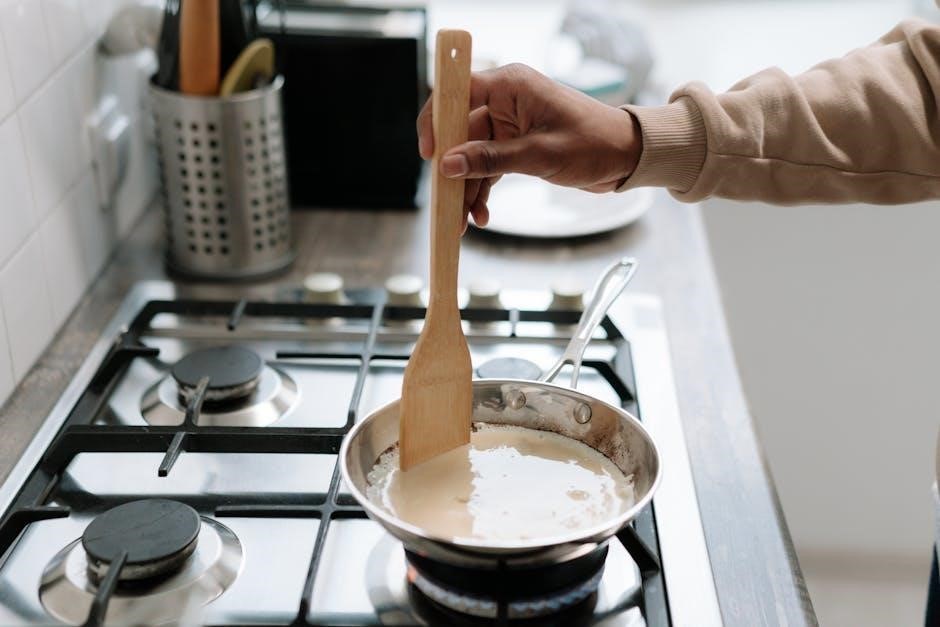
Safety Tips and Precautions
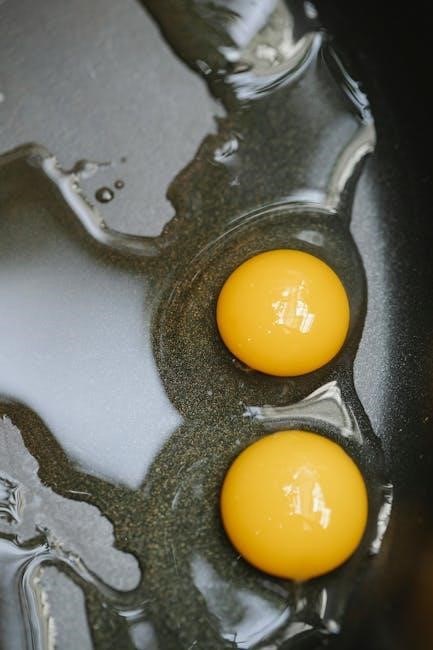
Handle boiling water with care to avoid burns. Ensure the container does not boil dry, and always clean the mouthpiece thoroughly after use.
Avoiding Burns During Boiling
To prevent burns, handle boiling water and the mouthpiece with extreme caution. Always use tongs or a heat-resistant tool to submerge and retrieve the mouthpiece. Ensure the water level is sufficient to avoid rapid boiling dry, which can cause splashing. Keep the stove area clear of flammable materials and avoid distractions while boiling. Use oven mitts or a towel to protect your hands when handling hot containers. Never leave boiling water unattended, especially around children. Allow the mouthpiece to cool slightly before handling to avoid direct contact with hot surfaces. Following these precautions ensures a safe and effective sterilization process.
Ensuring Proper Hygiene
Proper hygiene is crucial when handling a boiling mouthpiece to prevent contamination and maintain effectiveness. Always wash your hands thoroughly before and after handling the mouthpiece. Use clean, distilled water for boiling to avoid mineral deposits and impurities. After boiling, allow the mouthpiece to cool slightly before rinsing it with clean, hot water to remove any residue. Store the mouthpiece in a dry, well-ventilated area to prevent bacterial growth. Regularly disinfect the mouthpiece according to the manufacturer’s guidelines, and avoid sharing it with others. By following these hygiene practices, you ensure the mouthpiece remains safe and effective for its intended use.
Following Manufacturer Guidelines
Adhering to the manufacturer’s instructions is essential for the safe and effective use of a boiling mouthpiece. Each product may have specific requirements for boiling time, temperature, and materials to ensure proper sterilization and shape retention. Always read and follow the provided guidelines carefully to avoid damaging the mouthpiece or compromising its fit. Check for any recommended disinfection methods or cooling procedures, as these can vary by brand. Failure to follow instructions may result in improper fit, reduced effectiveness, or potential health risks. By prioritizing manufacturer recommendations, you ensure the mouthpiece performs as intended and remains safe for repeated use;
Properly boiling and fitting a mouthpiece ensures optimal performance, safety, and hygiene. Always follow instructions carefully to achieve the best results and maintain the device’s integrity.
Boiling a mouthpiece involves several critical steps to ensure proper fit, safety, and hygiene. Start by preparing the mouthpiece and materials, following the manufacturer’s guidelines. Submerge the mouthpiece in boiling water for the recommended time, typically 30-60 seconds, to soften the thermoplastic material. After boiling, allow it to cool slightly to avoid burns. Place the mouthpiece in your mouth and bite down gently to shape it around your teeth for a secure fit. Once fitted, store it properly and clean it regularly to maintain hygiene. Disinfect the mouthpiece after each use and follow all safety precautions to prevent damage or discomfort. Proper care ensures longevity and optimal performance of the mouthpiece.
Final Tips for Optimal Results
For the best outcomes, ensure the mouthpiece is not boiled longer than recommended to avoid distortion. Use a timer to monitor boiling time accurately. Avoid using harsh chemicals, as they may damage the material. Once fitted, check the mouthpiece regularly for proper alignment and comfort. Store it in a clean, dry place to prevent bacterial growth. For athletes, practice wearing the mouthpiece during training to ensure it stays in place during intense activities. Always follow the manufacturer’s instructions for specific care and maintenance. By adhering to these tips, you can extend the lifespan of your mouthpiece and ensure it provides consistent protection and comfort.